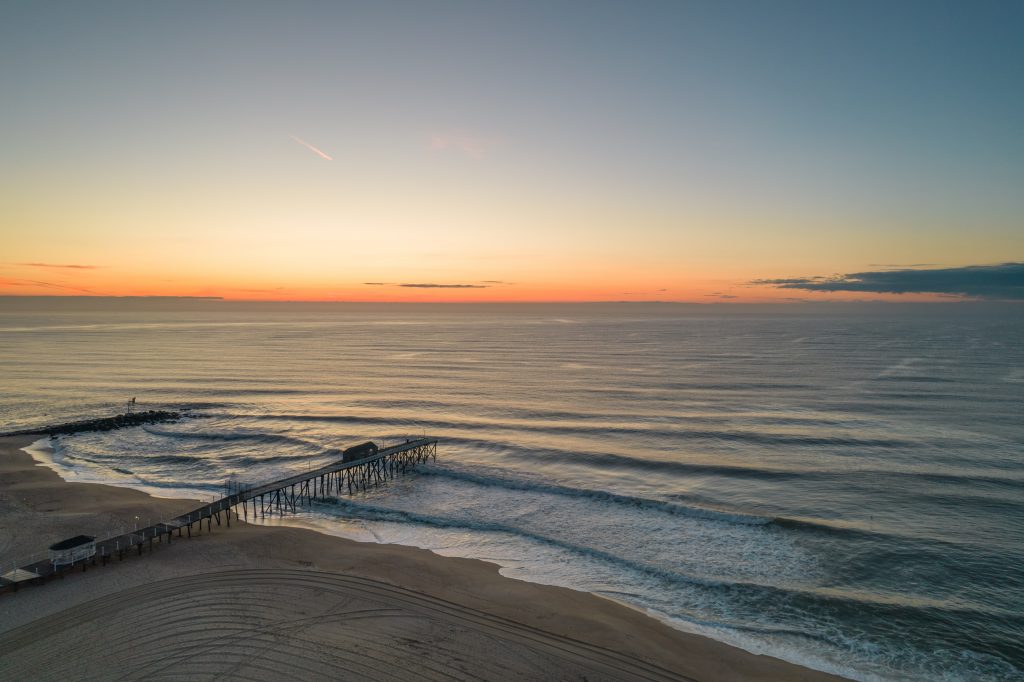TOMS RIVER, N.J. — New Jersey officials are defending proposed building rules designed to limit damage from future storms and steadily rising seas in coastal areas, countering criticism that the state aims to force people away from the Jersey Shore by making it harder and more expensive to build or rebuild there.
Lawmakers from both parties held a hearing recently in Toms River, one of the hardest-hit communities by Superstorm Sandy, to discuss the state’s Protecting Against Climate Threats initiative and respond to criticism of the proposal from business interests.
Mandated by an 2020 executive order from Democratic Gov. Phil Murphy, the proposed rules are designed to account for rising seas and a changing climate in making land use decisions near the ocean, bays and rivers in an effort to limit damage from future storms.
The rules would extend the jurisdiction of flood control measures further inland, require buildings to be constructed five feet (1.5 meters) higher off the ground than current rules call for, and require elevating roadways in flood-prone areas.
They are to be published soon in the New Jersey Register, and subject to public comment before taking effect later this year.
Other states and cities are considering or doing similar climate-based updates to development rules or acquisition of flood-prone properties, including North Carolina, Massachusetts, Fort Worth, Texas, and Nashville, Tennessee.
Nick Angarone, New Jersey’s chief resilience officer, said proposed rules are necessary to “be clear-eyed about what is happening right before us.”
He said New Jersey ranks third in the nation in flooding claims paid by the federal government at $5.8 billion since 1978.
Angarone and others cited a Rutgers University study projecting that sea levels in New Jersey will rise by 2.1 feet (65 centimeters) by 2050 and 5.1 feet (1.5 meters) by the end of the century. By that time, he said, there is a 50% chance that Atlantic City will experience so-called “sunny-day flooding” every day.
The New Jersey Business and Industry Association pushed back hard against the rules and the study upon which they are based, warning that the initiative is the start of a much-debated “managed retreat” from the shoreline that some scientists say needs to happen but that is anathema to many business groups.
“It will significantly harm the economy of our shore and river communities, and is premised on the policy that people and businesses should be forced to retreat from the coast,” said Ray Cantor, an official with the group and a former advisor to the Department of Environmental Protection under Republican Gov. Chris Christie.
“We do believe that we need to consider sea level rise in our planning efforts,” he said. “However, this rule is based on flawed scientific assumptions and will force a retreat from the Jersey Shore and coastal communities.”
Rutgers defended its projections as consistent with 2021 sea-level projections for Atlantic City of the Intergovernmental Panel on Climate Change, “a trusted, highly credible, heavily reviewed source of information for climate change.”
Cantor claimed the new rules will create “no-build zones” in parts of the shore where it will simply be too costly and onerous to comply with the new requirements.
State officials vehemently denied that claim, saying the rules aim only to lessen the amount of damage from future storms that residents and businesses must deal with. They created a website aimed at “myths” about the new rules, making clear that nothing would prevent the rebuilding of storm-damaged structures and that there would not be any “no-build zones.”
Tim Dillingham, executive director of the American Littoral Society, said governments should start discouraging new construction in areas that repeatedly flood.
“We need to stop developing highly vulnerable areas,” he said. “We ought to take steps to keep those people out of harm’s way.”
Under its Blue Acres buyout program, New Jersey acquired and demolished hundreds of homes in areas along rivers and bays that repeatedly flood. But it has yet to buy a single home along the ocean.
Sen. Bob Smith, who chaired the hearing, said the measures called for by the proposed rules “are not a retreat.” He called opposition from the Business and Industry Association “silly.”
The association appeared unfazed by the criticism; it hired an advertising plane to fly a banner up and down the oceanfront with words for the governor: “Don’t Force A Shore Retreat.”
THE ASSOCIATED PRESS











Recent Comments
comments for this post are closed